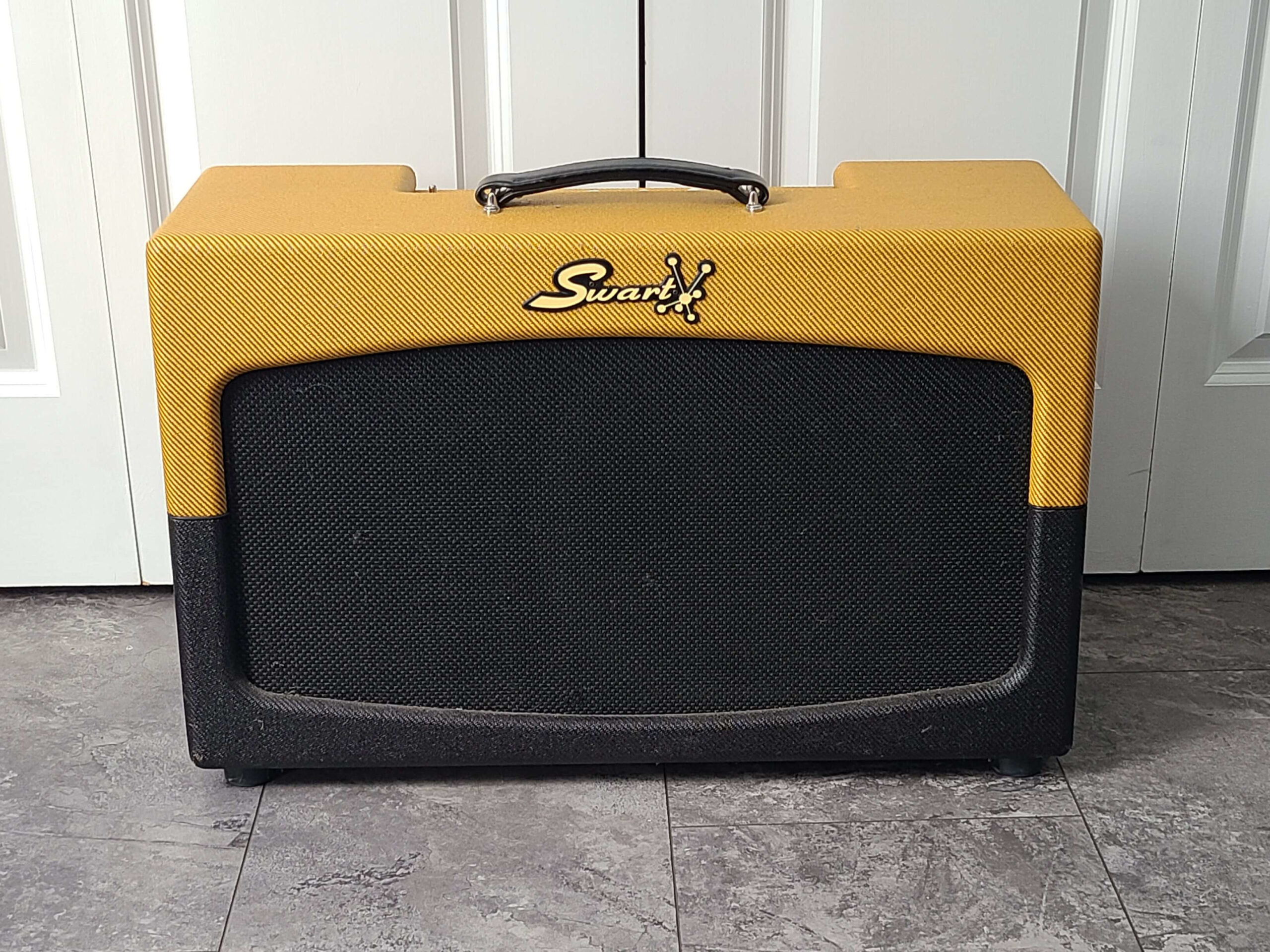





This was my first time working on a Swart amp, and I was pleased by the build quality. The cabinet is beautiful, and solid. The wiring and soldering were clean. I am not a fan of carbon comp resistors, but every builder has their own preference and reasoning. The only thing I didn’t like was that they have the cathode resistors sitting right on the bypass caps, and they should know better (especially with carbon comps). At best, the heat dissipating from those resistors is going to change the capacitance of the caps when the amp is running. More likely, it will shorten the life of those caps, and possibly even cause them to rupture (although I see that more with metalized polypropylene caps than aluminum electrolytics). I measured the caps, and while the ESR on one was higher than I expected, they were still within tolerance, so I just bent the leads to try to get a little air between the components.
This amp came in with a shorted rectifier. Luckily, the have the B+ fused, so no major damage occurred. I wish more amp builders would take the simple precaution of adding a B+ fuse. Instead of any major repair, this customer was back in business for the low price of a 5AR4 and a 500mA fuse.
Once I had it repaired, and gave it a check-up, I spent a good bit of time playing. The clarity of this amp is impressive. It has a nice, full low end (very important to me) that may be attributed to the extra-wide cab as much as the voicing of the circuit. And I was really blown away by the dimension and depth of the reverb and tremolo. This amp really fills-up a lot of sound “space” at a fairly low volume.
I didn’t get to spend much time pushing it into crunch, but the brief moment that I did, it seemed to have a smooth growl. The owner has the amp set-up with a 6L6 pair, and the 5AR4 rectifier. Evidently, the amp can also switch to 6V6 and 5Y3 with no fuss, which I think I would enjoy.
Hopefully, this won’t be the last Swart I see. Although, from what I saw in this one, I’m betting they don’t break-down too often.

